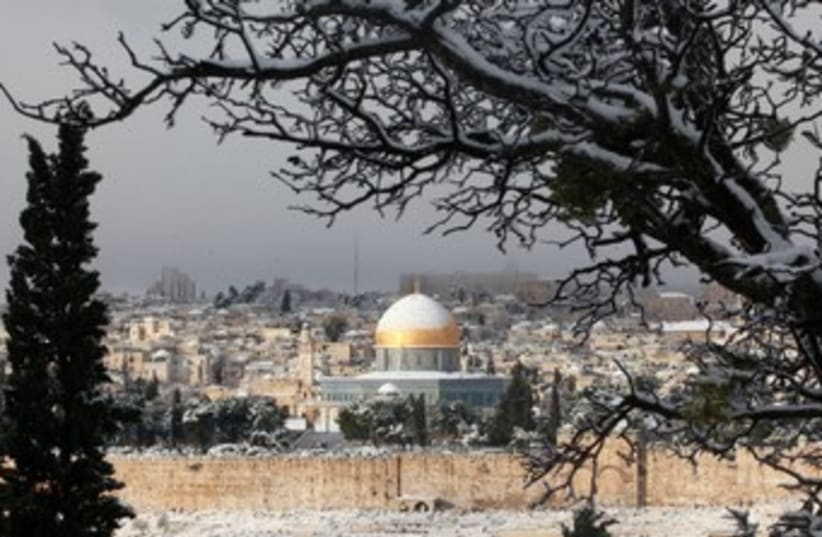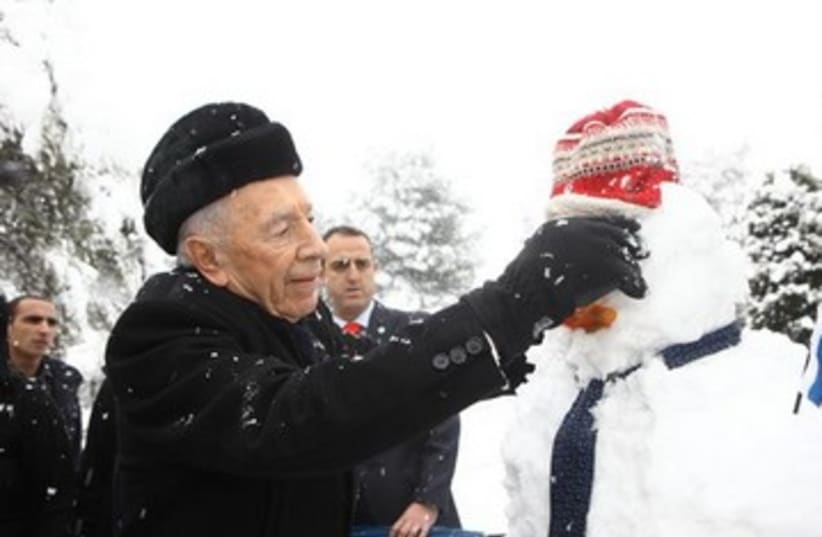
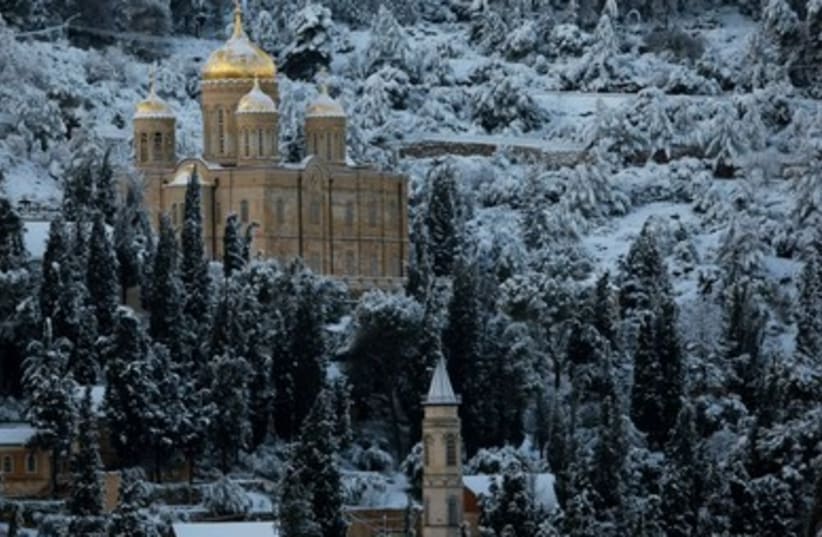
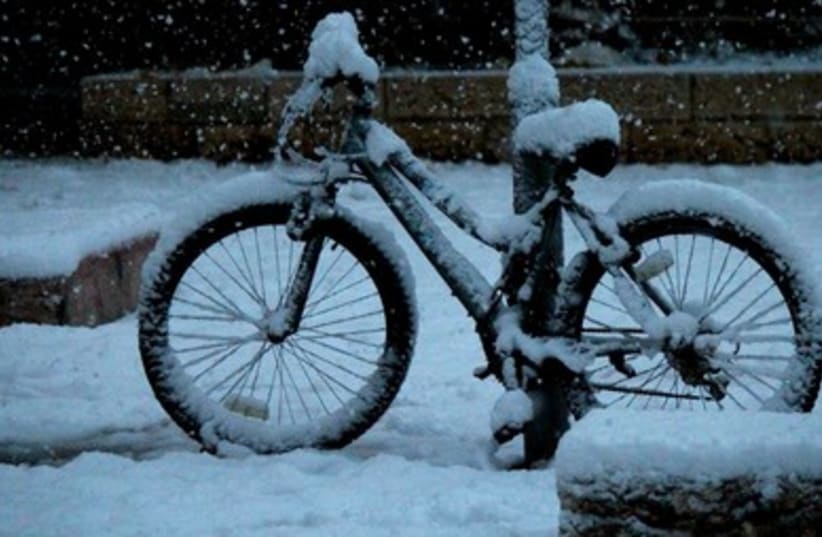

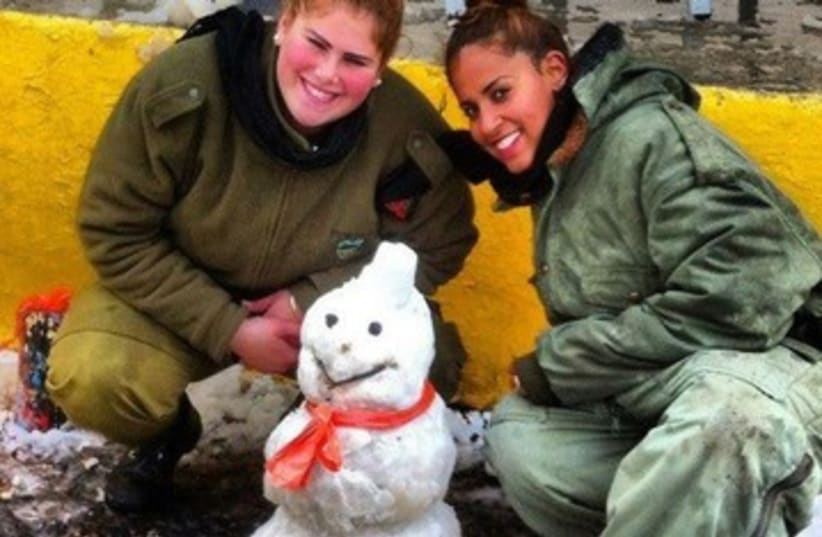
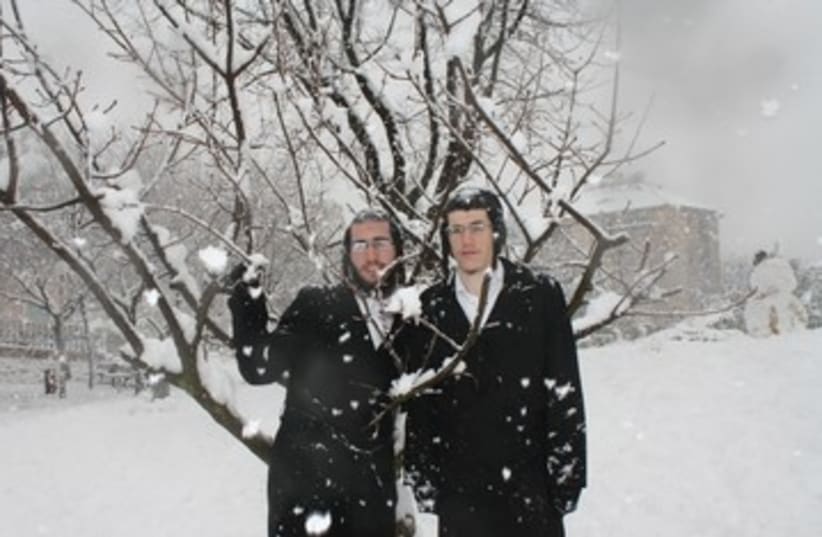
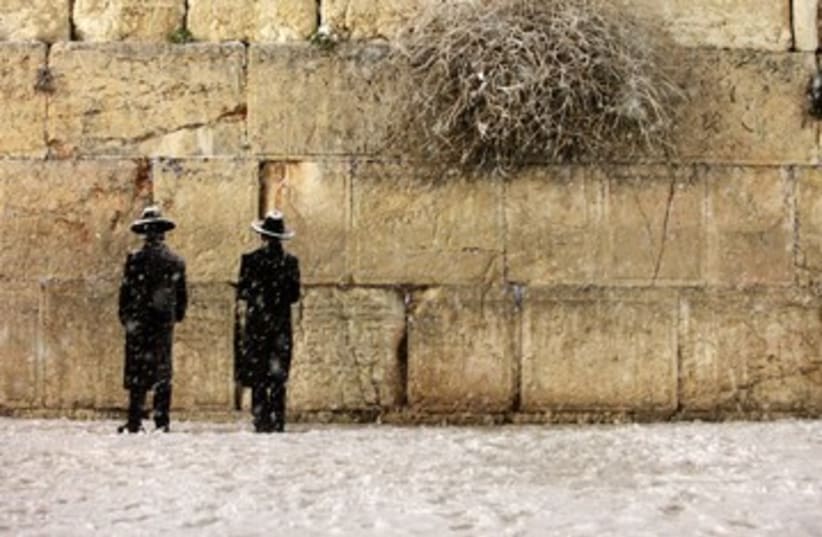
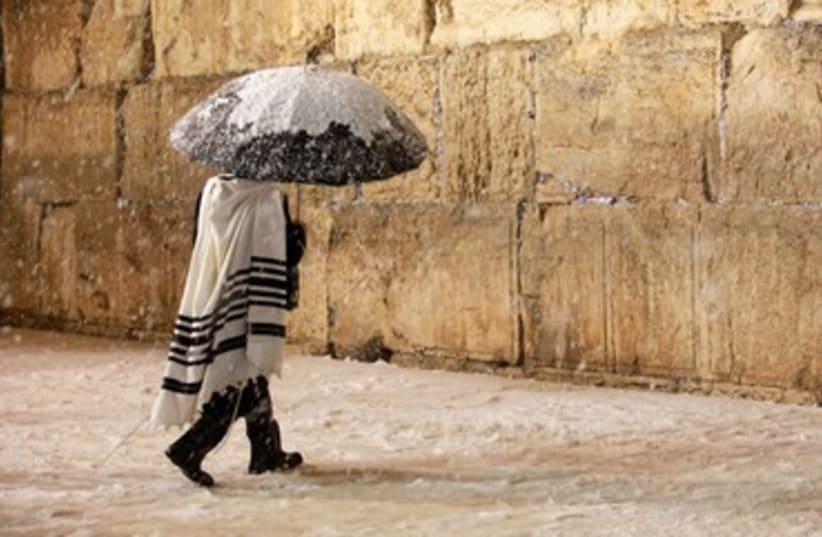
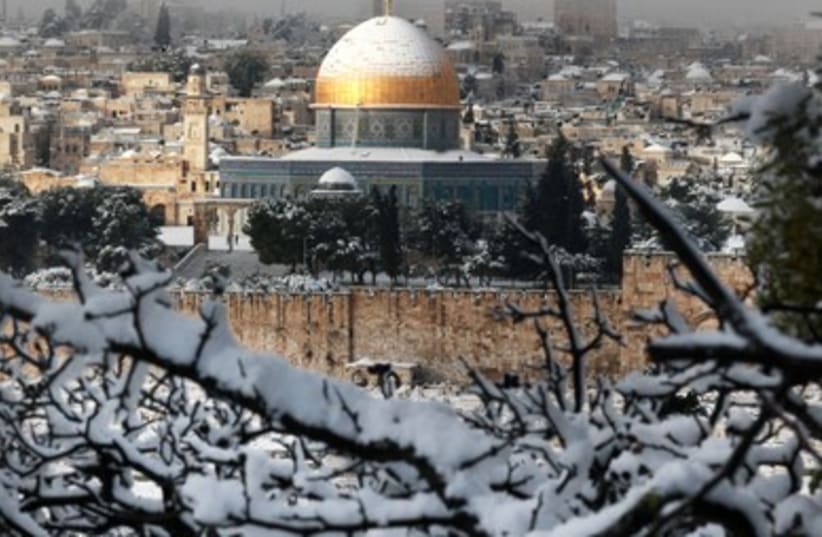
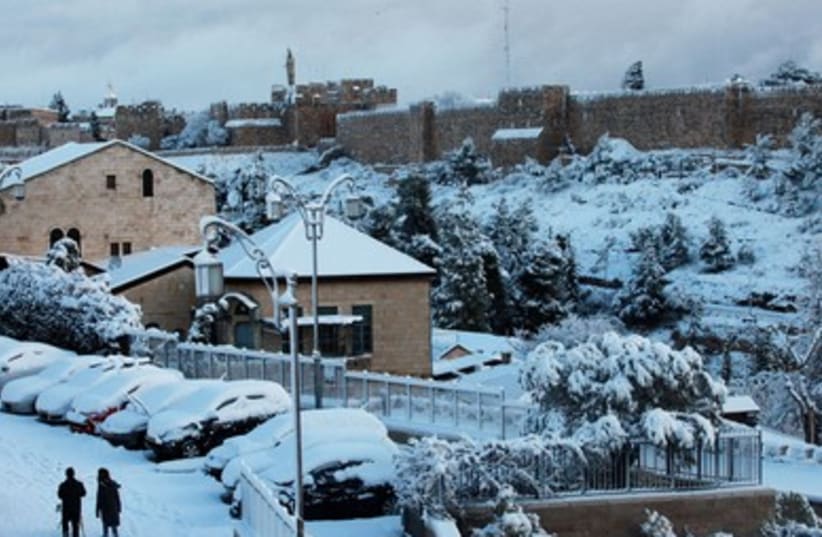
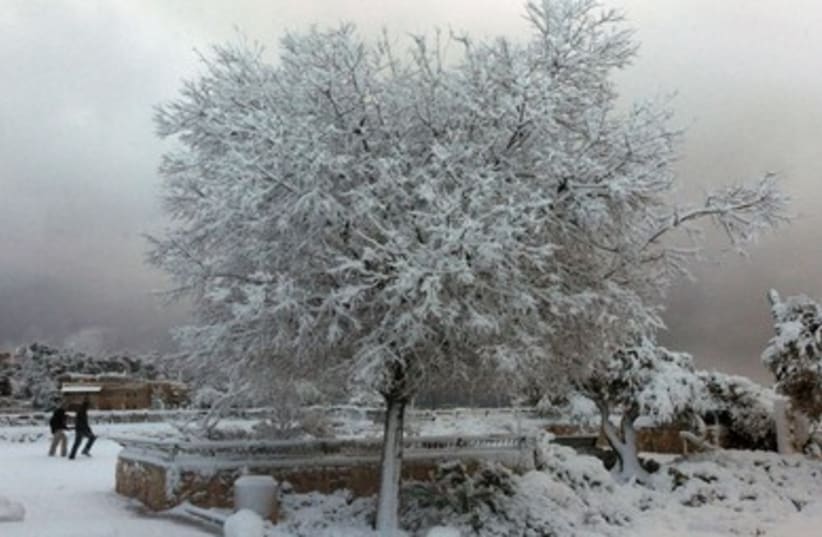
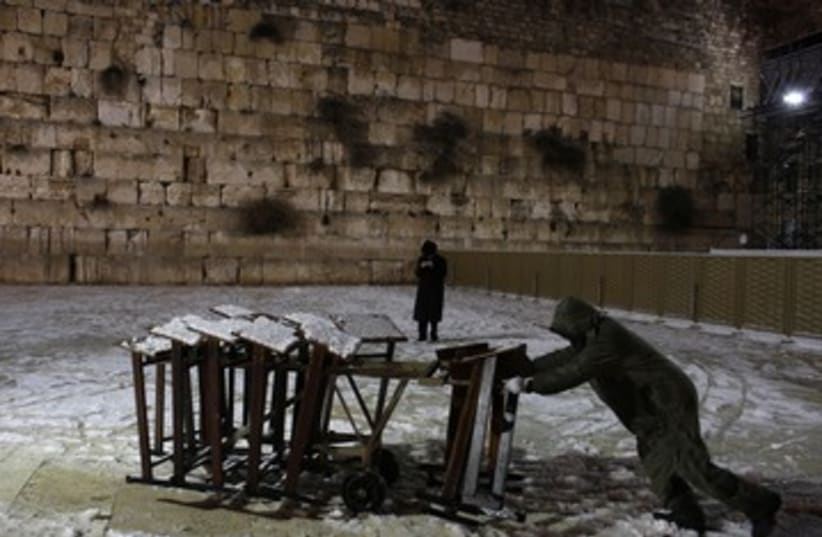

All in all, at least 14 people have died in the winter storm in Lebanon, Jordan, Turkey, the Palestinian Authority and another three in Israel. With the torrential rains and winds that swept the region for nearly a week, meteorological agencies in both Israel and Lebanon have called the storm the worst in 20 years.A deluge of rain flooded homes all over Israel throughout the week, with between 150 and 250 millimeters accumulating in the country’s North and Center – and some areas even receiving up to 300 millimeters, according to the Israel Meteorological Service.The northern portion of the Jordan Valley was hit significantly, with between 130 and 150 mm.; the southern portion received more than 70 mm., IMS data said. Northern Negev areas received between 40 and 70 mm., while the central Negev received between 25 and 40 mm. The southern desert regions, however, were also ravaged by dust storms.“Such rainfall in one continuous six to seven day stretch is rare, and in the past 50 years, such incidents only occurred a few times,” a statement from the IMS noted.After continued heavy rains, Lake Kinneret’s (the Sea of Galilee’s) water level stood at 211.20 meters below sea level, a 14-centimeter rise from Wednesday morning. In total, the water level rose 73 cm. during the string of stormy days – an increase that is unparalleled in the last 10 or 20 years, the Water Authority said. Due to the strong flows in the streams that feed into the Kinneret, the lake is expected to rise about another 50 cm. by the end of January and should be about 2 meters away from full capacity. The amount of water added to the Kinneret in the month of January alone should amount to about 200 million cubic meters total, the Water Authority added.The week-long storm system culminated in piles of snow – with the capital receiving between 10 and 20 cm.between Wednesday night and Thursday noon.In addition to the snowfall that saddled Jerusalem from Wednesday night into Thursday, much of the country’s North also found itself buried in a winter wonderland – oftentimes unable to go to work and school. Mount Hermon consistently received snow throughout the entire storm system, but the rest of the Golan Heights and the Galilee had snow predominantly on Wednesday, the IMS said.Although the northern Golan received up to 25 cm., the remainder of the Golan and the Upper Galilee had only about 10 cm., the IMS data said. In the early morning, Negev cities Dimona and Sde Boker also received snow.While roads had closed down in the morning in the North and near Jerusalem, by the afternoon most traffic was moving as normal, as the force of the storm began to taper.Ten kindergartens and three schools were shut down for the day in Merom Hagalil, as well as two schools in the Upper Galilee and four in the Golan Heights Druse villages.Most schools in Safed and the Golan Heights region were open, as were all schools in Haifa.In the Jerusalem area, there was no school in the city itself, or in Gush Etzion, Kiryat Arba, Beit El, Har Adar and Mevaseret Zion. Several Samarian settlement schools were closed, as were those of communities in the Tamar region, Ein Gedi, Dimona and Ramat Hanegev.Most Palestinian schools were also closed throughout the West Bank, according to the Palestinian news agency Ma’an, which reported heavy flooding that damaged hundreds of homes.Agricultural areas, particularly in the country’s North, were also ravaged by the storm, with about 2,000 hectares of crop fields destroyed in the Hula Valley alone, according to the Upper Galilee Regional Council.Tel Aviv, which had faced a deluge of floods throughout the week, had a much lighter Thursday, receiving only about 4.6 millimeters of rain in its city center, compared to the 130- mm. total for the week.All in all, the city’s workers handled 1,680 weather-related incidents during the six days of storms – 110 flooded apartments, four flooded shelters, 176 flooded yards, three flooded businesses, 508 fallen trees and branches, 80 road obstacle removals, 143 fallen traffic lights and signs, 59 potholes, 142 damaged antennas, 30 sewage issues, 40 fallen building parts or fences, 25 torn power cables, 83 other electricity issues, 208 problematic road puddles, six road erosion incidents, 44 objects toppling from rooftops, nine broken or loosened street lamps and 10 street sign glitches, the municipality said.Although the brunt of the storm itself ended, due to the continued strong flow of streams and rivers throughout the country, the Israel Nature and Parks Authority warned the public that it is prohibited to cross these waterways and that nature reserves will still be extremely muddy and flooded.Park visitors must also be aware that pedestrian paths will be very slippery, the INPA said.Many hiking paths have been temporarily closed due to the weather, such as Guvta, Hazori, Orvim, Gilbon, Zaki, El Al, Tenanim and Metzar streams. It is safe, however, to hike in Tel Dan, Banias and the Nimrod Fortress National Park, according to Yossi Friedman, director of safety and fire prevention at the INPA. Also safe – and open at 50 percent of the normal entrance fee – are Yehudiya, Zavitan waterfall, Majrase and the Hexagon Stream, Friedman said.Some areas of the country continued to receive localized power outages on Thursday – including portions of Jerusalem, Herzliya, Gush Etzion, Ramat Hasharon, Or Akiva, Haifa and Tel Aviv, Israel Electric Corporation said. Much of these glitches were caused by trees that collapsed on power lines and issues were resolved quickly, an IEC statement said.Overnight and into Friday morning, there will still be a risk of icy road conditions in the northern, central and Negev mountains, according to the IMS.On Friday, skies will be partly cloudy to cloudy with isolated light rain in the north and along the coast, while temperatures will rise slightly but remain unseasonably cold. Saturday will likely feature partly cloudy skies and an additional rise in temperature with strong east winds, the IMS said.Danielle Ziri and Jerusalem Post staff contributed to this report.
